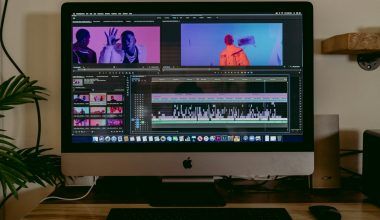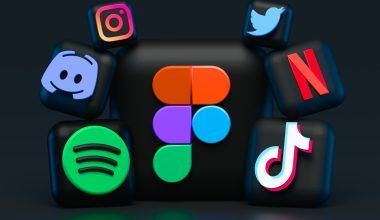In the evolving world of music and video distribution, many creators dream of showcasing their work on global platforms like iTunes. But the question often arises—how can you share your video on iTunes without a label? The good news is, it’s not just possible; it’s easier than you think. Gone are the days when only established artists with record labels could access these opportunities. Today, independent creators have the tools and resources to make their mark without middlemen.
This blog will guide you through every step of the process, breaking it down into simple actions you can take to upload your video to iTunes as an independent artist. By the end, you’ll feel empowered to take control of your creative journey.
iTunes is a powerhouse in the entertainment world. It has a massive user base, making it a prime platform for reaching new audiences. Sharing your video here can increase your visibility, boost revenue, and build your reputation.
Independent artists often think they need a label to handle the complexities of distribution, but that’s not the case anymore. With platforms designed for indie creators, you can directly upload your content and focus on reaching viewers worldwide.
What You Need Before Starting
Before diving into the process, let’s prepare. Here’s what you need to ensure your video meets iTunes’ requirements:
- High-Quality Video: Ensure your video is professionally edited and meets iTunes’ technical standards.
- Metadata: Prepare accurate titles, descriptions, and keywords for your video.
- Artwork: Create eye-catching visuals like cover art that align with iTunes’ specifications.
- Distribution Partner: To access iTunes, you’ll need an approved aggregator or distribution service.
1. Choose the Right Aggregator
Since iTunes doesn’t accept direct uploads from individuals, you’ll need an aggregator. Aggregators act as middlemen between you and iTunes. Popular options include Deliver My Tune, CD Baby, and Ditto Music. They help independent artists distribute their videos, ensuring compliance with iTunes’ guidelines.
2. Prepare Your Video for Upload
Your video must meet certain standards, such as:
- HD resolution (at least 1920×1080).
- Proper aspect ratio (16:9 is recommended).
- Approved file formats, like MOV or MP4.
Make sure your video is free of glitches, and double-check the sound quality.
3. Create a Strong Metadata Package
Metadata is the information attached to your video. It includes the title, description, cast details, and genre. Use clear and engaging language to make your video stand out. Remember to include relevant keywords for better discoverability.
4. Design Eye-Catching Artwork
Artwork matters because it’s the first thing viewers notice. Invest in professional design tools or hire an artist to create a cover that reflects your video’s theme. Ensure the artwork is crisp and follows iTunes’ dimension requirements.
5. Register for a Distribution Platform
Sign up with the aggregator you’ve chosen. During registration, you’ll provide details about yourself and your video. This is where you’ll upload your metadata and artwork.
6. Pay the Necessary Fees
Most aggregators charge a fee for uploading content. These fees vary depending on the service and type of content. For example, TuneCore may charge a flat annual fee, while CD Baby takes a percentage of your sales.
7. Submit Your Video for Review
Once everything is ready, submit your video. The aggregator will review it to ensure it meets iTunes’ standards. This step may take a few days, so patience is key.
8. Monitor the Approval Process
After submission, keep an eye on the approval status. If your video gets rejected, don’t panic. Most aggregators provide feedback, allowing you to fix any issues and resubmit.
Tips for Success
- Optimize Your Title and Description: Make them catchy and informative. Avoid clickbait, but keep your audience intrigued.
- Promote Your Video Before the Launch: Use social media, email lists, and teasers to create buzz.
- Engage with Your Audience: Respond to comments and messages to build a loyal fanbase.
- Track Your Performance: Use analytics tools provided by the aggregator to monitor your video’s performance on iTunes.
Why Going Label-Free Is Empowering
Sharing your video on iTunes without a label gives you full creative control. You’re not bound by contracts or profit-sharing agreements, allowing you to keep more of what you earn. Plus, you have the flexibility to market your content in a way that aligns with your vision.
This direct approach also allows you to build genuine connections with your audience. As an independent creator, you’re not just a name on a label—you’re an individual with a story.
Common Challenges and How to Overcome Them
Technical Issues
Technical rejections are common but solvable. Double-check your file formats and specifications before submitting.
Budget Constraints
If aggregator fees seem steep, start small. Many services offer budget-friendly options for indie creators.
Lack of Marketing Skills
Promoting your video might feel overwhelming, but there are countless free resources online to help you master social media and digital marketing.
Conclusion
Sharing your video on iTunes without a label is not just a dream; it’s a reality waiting for you to embrace. With the right tools, preparation, and mindset, you can reach global audiences while maintaining full control of your work.
Take the leap today and make your mark as an independent creator. Remember, iTunes is just one platform. Once you master this process, the sky’s the limit for where your creativity can take you.
For further reading, explore these related articles:
- Share Your Song on All Streaming Platforms in 2025
- How to Share Your Song on All Streaming Platforms and Earn Money
- Share Your Song on All Streaming Platforms as an Independent Artist
For additional resources on music marketing and distribution, visit DMT RECORDS PRIVATE LIMITED.






